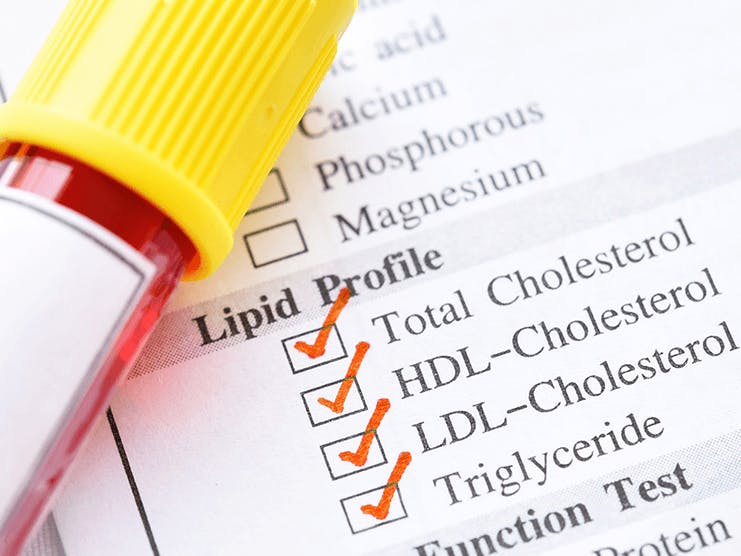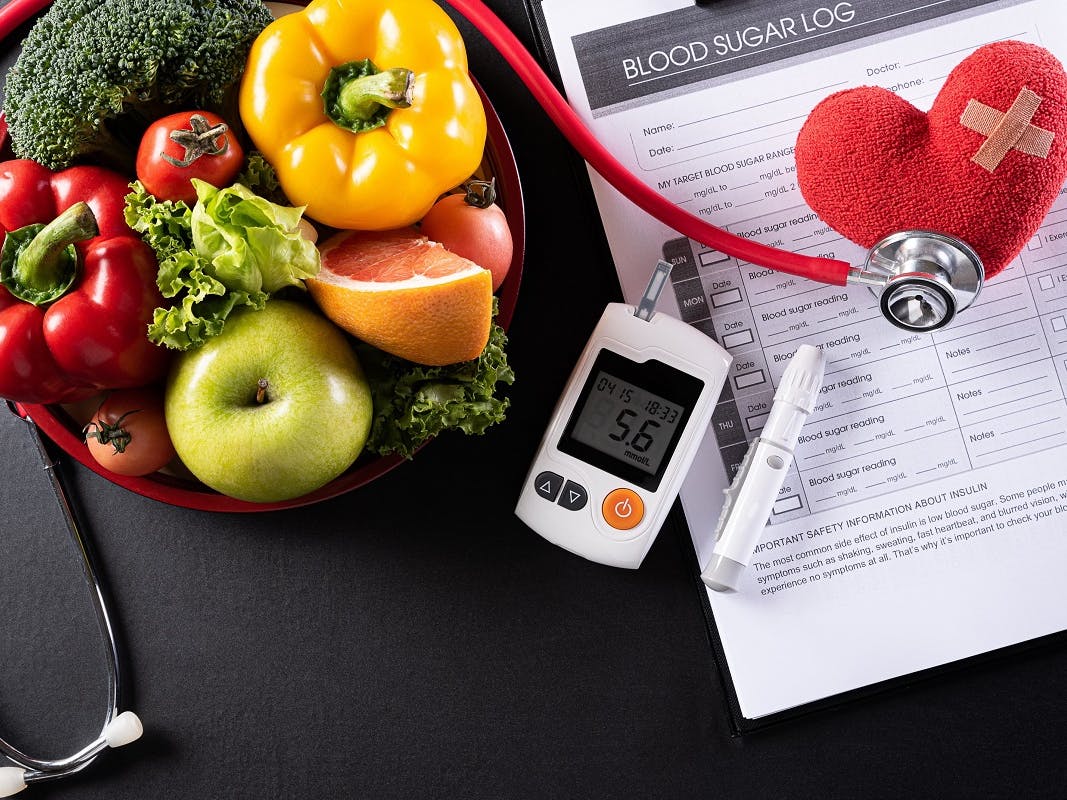
A lipid panel is the only way to tell if you have high cholesterol, since the condition presents no symptoms.
Taking care of your cardiovascular health can help prevent heart disease, heart attack, and stroke. Part of that is maintaining a healthy level of cholesterol, which is a type of lipid needed to build cells and make vitamins and other hormones. Too much cholesterol can lead to heart disease.
Medicare covers cholesterol testing as part of the cardiovascular disease preventive screening blood tests, which includes tests for cholesterol, lipid, and triglyceride levels that help detect conditions that could lead to a heart attack or stroke.
In this article, you'll learn about what a lipid panel is, Medicare lipid panel coverage, why you should get a lipid panel, the symptoms and dangers of high cholesterol, and what you can do to lower your cholesterol or maintain a healthy number.
What is a lipid panel?
A lipid panel is a blood test used to monitor and screen for your risk of heart disease. The panel test includes measurements of your cholesterol levels and triglycerides by looking at the amount of certain fat molecules (called lipids) in your blood. The five different types of lipids that are analyzed in the blood sample include:
- Low-density lipoprotein (LDL) cholesterol: Also called "bad cholesterol."
- Very low-density lipoprotein (VLDL) cholesterol: Comes from the food you've recently eaten and is typically present in low amounts when the blood sample is a fasting sample. If elevated in a fasting sample, it may be a sign of abnormal lipid metabolism.
- High-density lipoprotein (HDL) cholesterol: Also called the "good cholesterol," it helps decrease the buildup of LDL.
- Total cholesterol: The overall cholesterol level after combining LDL, HDL, and VLDL.
- Triglycerides: A type of fat from food we eat, too much of which are associated with heart disease and pancreatic inflammation.
By analyzing your cholesterol, your doctor can help find and diagnose health conditions related to heart disease. They may order this panel as a routine test, to monitor your cholesterol level if you had abnormal results previously, to monitor your response to medications, or to help diagnose other medical conditions.
During your screening, the provider will check your arms for an easily accessible vein. Once located, they will clean the area, then insert a small needle to take a blood sample. The sample will collect in a test tube, and once they have a large enough sample, they will remove the needle and place a bandage over the site. Typically, this process takes around five minutes.
Normal lipid panel results are as follows:
- Total cholesterol: Below 200 mg/dL*
- HDL: Above 60 mg/dL
- LDL: Below 100 mg/dL (or if you have diabetes, below 70 mg/dL)
- Triglycerides: Below 150 mg/dL
*As measured in milligrams per deciliter of blood – mg/dL
Even if your results are abnormal, it doesn't mean you have a condition that needs treated. You may just have to make some lifestyle adjustments to bring the numbers back into healthy range. You may also be asked to get a follow-up lipid panel after a shorter period to monitor any changes.
Medicare lipid panel coverage
Medicare Part B covers a cardiovascular screening blood test, including a lipid panel, once every five years. If your provider accepts Medicare assignment, you'll pay $0 for the tests.
However, if you have a diagnosis of high cholesterol, Part B will typically cover additional blood work to help your doctor monitor your condition, as well as how you respond to medication. In this case, you may be responsible for the 20% co-insurance of the Medicare-approved cost.
Your doctor may also order a lipid panel to help diagnose a different condition or disorder, and if you meet the criteria, the test would still be covered by Medicare.
Why should I get a lipid panel?
You're considered high-risk for cardiovascular disease if you:
- Are over age 45 if you're a man, or over age 50 if you're a woman
- Had high cholesterol results on a previous test
- Smoke
- Are obese
- Have high blood pressure, diabetes, or prediabetes
- Don't get enough physical activity
- Have a family history (first-degree relative) who had heart disease at an early age
Too many lipids in your blood can lead to a buildup or blockage in your blood vessels and arteries, which can cause damage and increase your risk of heart disease, heart attack, and stroke.
When you get a lipid panel, your doctor can measure your lipid levels to learn your risk of these heart conditions. By catching any problems early, you can diagnose and treat them faster and help prevent cardiovascular disease.
Symptoms of high cholesterol
A blood test is the only way to know if you have high cholesterol because there are no symptoms. However, risk factors include:
- Age (more common in people over 40)
- Alcohol consumption
- Lack of exercise
- Obesity (BMI of 30 or greater)
- Poor diet (eating too much saturated fat or trans fats)
- Smoking
Some medical conditions can also cause unhealthy cholesterol levels. These include chronic kidney disease, diabetes, HIV/AIDS, hypothyroidism, and lupus. Some medications may also elevate your cholesterol, such as medications for acne, cancer, high blood pressure, irregular heart rhythms, and organ transplants.
Dangers of high cholesterol
When you have high cholesterol, it builds up faster on the walls of your arteries. Called plaques, this buildup can reduce the blood flow through your arteries and may cause complications such as:
- Chest pain
- A heart attack, when plaque tears or ruptures and forms a blood clot, blocking the flow of blood to your heart
- A stroke, which occurs when a blood clot blocks blood flow to your brain
In the U.S., someone has a heart attack every 40 seconds. Between 2015 and 2018, 126.9 million American adults had some form of cardiovascular disease. Heart disease is the leading cause of death for men and women in the U.S., so it's important to monitor and control your risk.
How to lower your cholesterol
The good news is there are several things you can do to lower your cholesterol and maintain healthy numbers.
- Get a lipid panel. Because Medicare covers a lipid panel once every five years, you should be sure to get this screening when you're eligible. Or, if your doctor orders it more often, follow your doctor's orders.
- Know your numbers. When you're screened, take time to understand your lipid profile, which explains the levels of HDL, LDL, and triglycerides in your blood. Know which levels are healthy or unhealthy, and how you can manage them.
- Exercise. Try to get at least 30 minutes of exercise three to four times per week.
- Quit smoking. Smoking lowers good cholesterol, which increases your levels of bad cholesterol. It's also linked to high blood pressure and other conditions that could lead to heart disease, due in part to the nicotine in cigarettes causing arteries to narrow.
- Maintain a healthy weight. Talk to you doctor about what weight and BMI is right for you and follow their recommendations for a diet and exercise program.
- Limit saturated fats. Too much beef, pork, lamb, and full-fat dairy can raise your bad cholesterol.
- Take medications as prescribed. If you're taking a prescription for cholesterol or another condition, be sure to follow your doctor's instructions for medication adherence.
It's important to work closely with your doctor to ensure the steps you're taking are the right ones and will help you maintain your health.
Additional Resources
Heart Disease Facts
External Website Link
High Cholesterol
External Website Link
Cardiovascular Disease Screenings
External Website Link
5 Health Screenings to Ask Your Doctor About
Internal Website Link
Speak with a Licensed Insurance Agent
M-F 8:00am-10:00pm | Sat 9:00am-6:00pm EST



